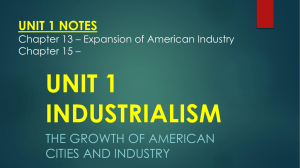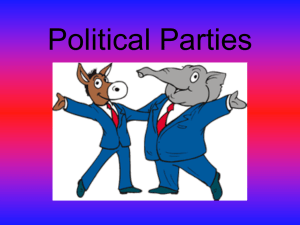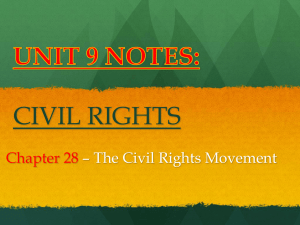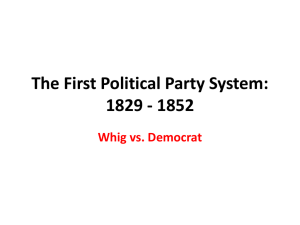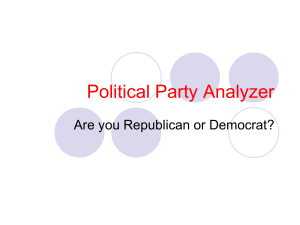LECTURE 02_The Workers Unite
advertisement
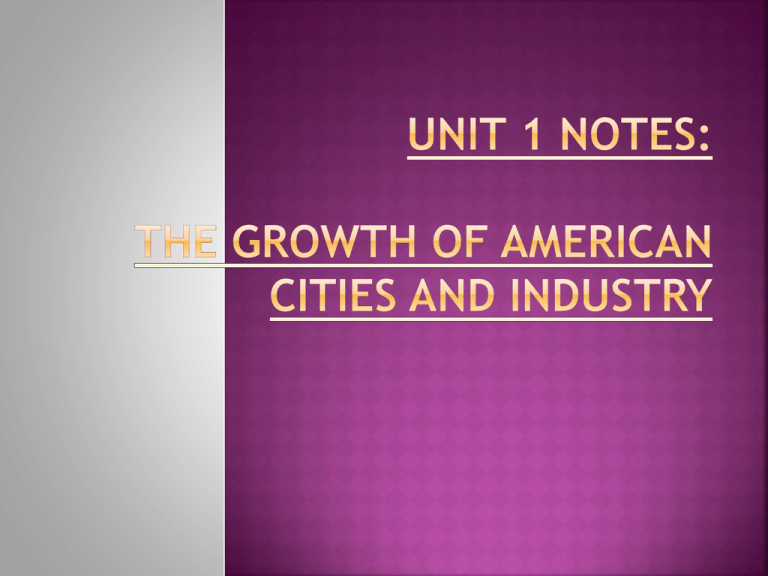
Chapter 13 The Expansion of American Industry (1850–1900) America: Pathways to the Present Chapter 13: The Expansion of American Industry (1850–1900) Section 1: A Technological Revolution Section 2: The Growth of Big Business Section 3: Industrialization and Workers Section 4: The Great Strikes # 1 - 16 George Washington; Federalist (1788) John Adams; Federalist (1796) Thomas Jefferson (1800) James Madison (1808) James Monroe (1816) John Quincy Adams (1824) Andrew Jackson; Democrat (1828) Martin Van Buren; Democrat (1836) William Henry Harrison; Whig (1840) John Tyler; Whig (1841) James K. Polk; Democrat (1844) Zachary Taylor; Whig (1848) Millard Fillmore; Whig (1850) Franklin Pierce; Democrat (1852) James Buchanan; Democrat (1856) Abraham Lincoln; Republican (1860) #21 - … Andrew Johnson; Democrat (1865) Ulysses S. Grant; Republican (1868) Rutherford B. Hayes; Republican (1876) James Garfield; Republican (1880) Chester A. Arthur; Republican (1881) Grover Cleveland; Democrat (1884) Benjamin Harrison; Republican (1888) Grover Cleveland; Democrat (1892) William McKinley Theodore Roosevelt CORE OBJECTIVE: Explain the changes in late 1800’s urban life relating to Immigration, Industrialization, and Politics in the Gilded Age. Objective 1.1: How did advances in electric power and communication affect people and business in this era? Objective 1.2: Why were industrialists of the era called both “Captains of Industry” and “Robber Barons”? Objective 1.3: How did industrialization impact the growing work force between 1880 and 1900? Objective 1.4: In what ways did government reform the spoils system and regulate railroads? THEME: American Industry will grow with positive and negative consequences CHAPTER 13 SECTION 3 Frederick Taylor developed “time and motion” studies about worker movements The goal was to eliminate wasted human energy & down time He published his ideas in Principles of Scientific Management (1911) which every move of a worker was planned to increase productivity increased worker productivity and changed the relationship between the worker and the product created In many industries, workers received a fixed amount for each finished piece — a few cents for a garment or a number of cigars. This type of work is called piecework. Payment for every item created Began using division of labor: factory workers perform one small part of production repeatedly, made production faster & more efficient. Took the pride & joy out of work as they never saw the finished product. In the 1880s, children made up more than 5 percent of the industrial labor force. Children often left school at the age of 12 or 13 to work. Girls sometimes took factory jobs so that their brothers could stay in school. If an adult became too ill to work, children as young as 6 or 7 had to work. The theory of Social Darwinism held that poverty resulted from personal weakness. Many thought that offering relief to the unemployed would encourage idleness. CHAPTER 13 SECTION 4 The gap between rich and poor In 1890, the richest 9 percent of Americans had nearly 75 percent of the national wealth. The average worker earned only a few hundred dollars a year. Many workers resented the extravagant lifestyles of many factory owners. Some concerned workers became politically active. Some were drawn to the idea of socialism an economic philosophy that favors public (govt.) instead of private control of property and income. (shared wealth) Socialists believe that society at large, not just private individuals, should control a nation’s wealth. That wealth, they say, should be distributed equally to everyone. an organized association of workers formed to protect and further their rights Began to form after the Civil War Most were small and local through the 1860’s Labor Union Goals 8 hour workday, end child labor Collective Bargaining: Wanted to achieve goals through workers negotiating with employers Used strikes to achieve goals: A strike is a mass refusal of employees to work Slowly workers began to communicate and organize on a national level First national labor union is the National trades union in 1837 The first successful national labor union is the NLU in 1866 Many employers disliked and feared unions. Some took steps to stop unions, such as: • • • • • forbidding union meetings firing union organizers forced new employees to sign “yellow dog” contracts, making them promise never to join a union or participate in a strike refusing to bargain collectively when strikes did occur refusing to recognize unions as their workers’ legitimate representatives A violent worker protest riot breaks out in Chicago’s Haymarket Square that kills dozens. On May 1, groups of workers mounted a national demonstration for an eight-hour workday. On May 3, police broke up a fight between strikers and scabs. A scab is a negative term for a worker called in by an employer to replace striking laborers. A group of anarchists, radicals who oppose all government, joined the strikers. At the event, a bomb thrown kills a police officer. The riot that followed killed dozens of strikers and police. Investigators never found the bomb thrower, yet eight anarchists were tried for conspiracy to commit murder. Four were hanged.

